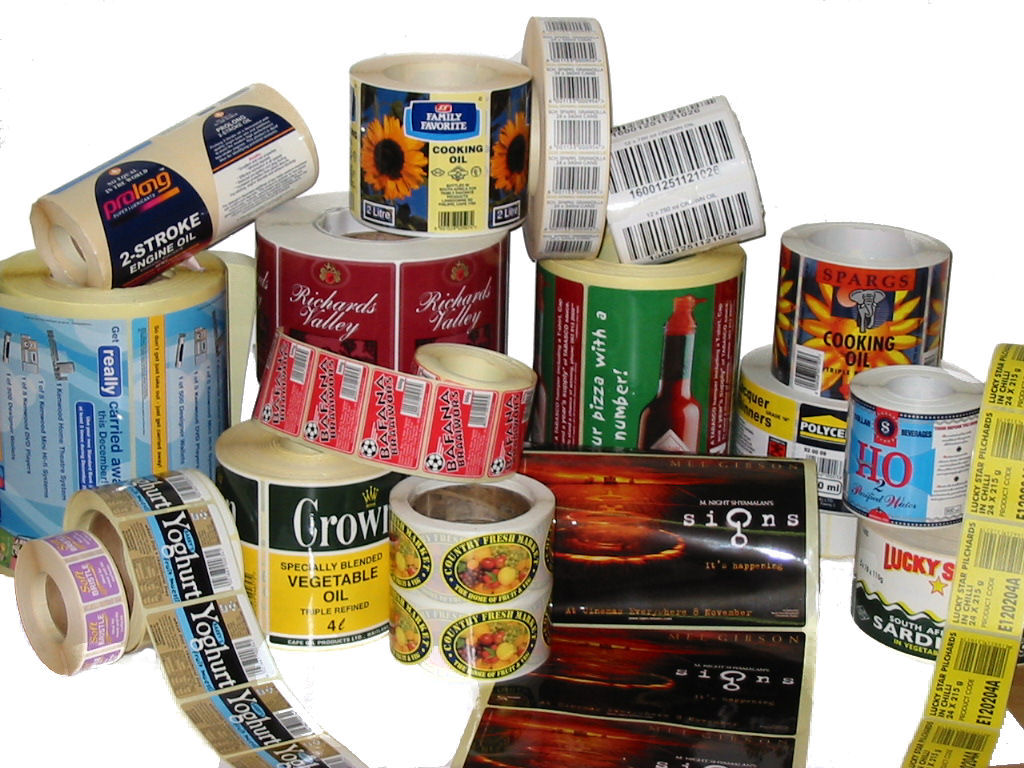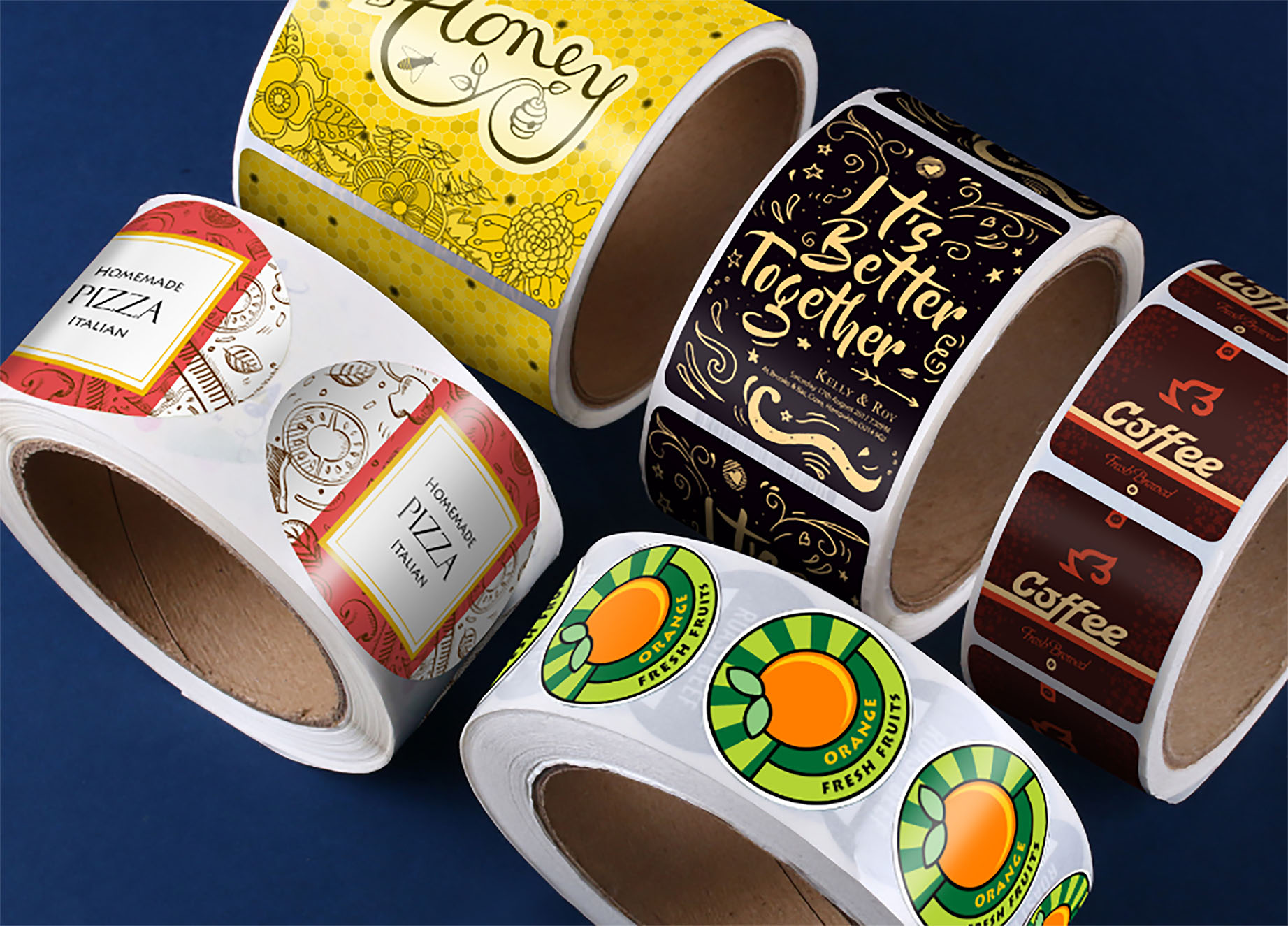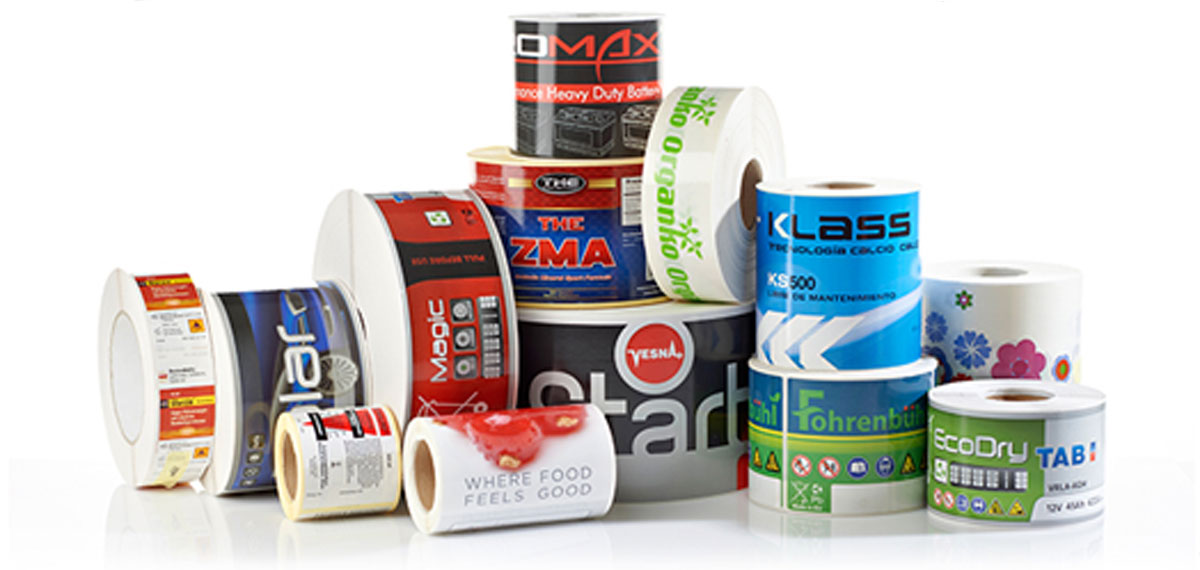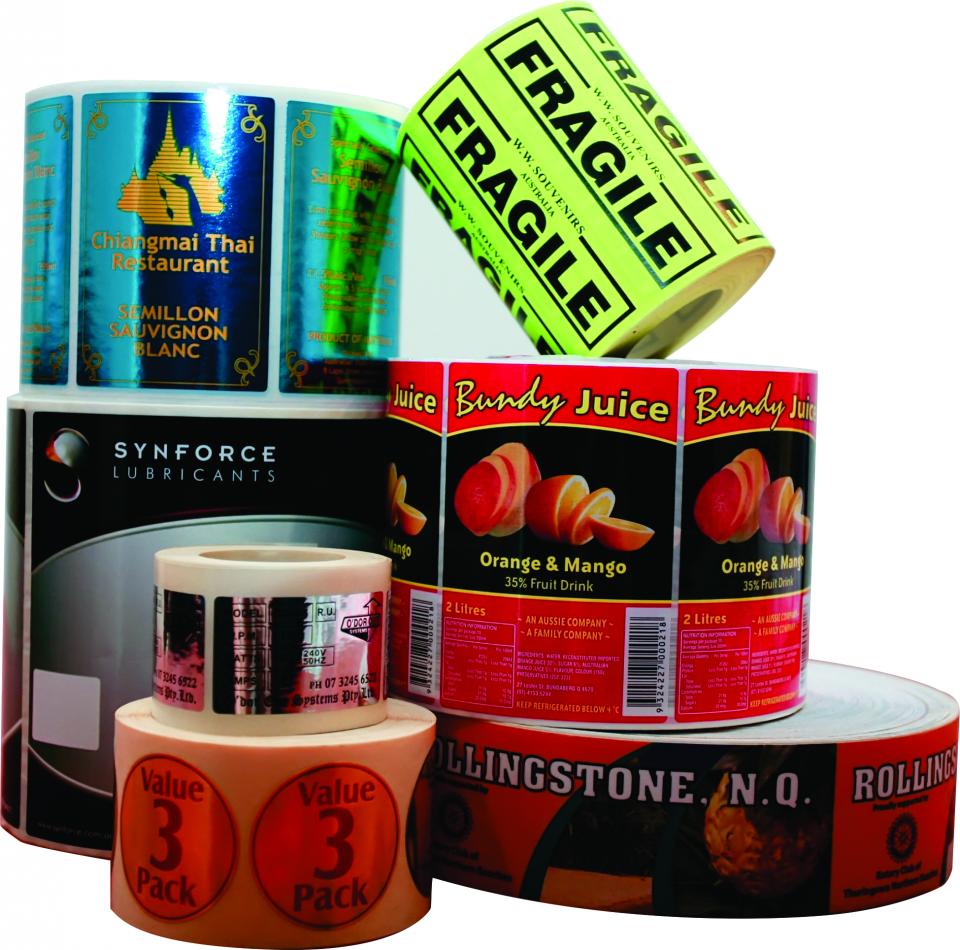 Loading... Please wait...
Loading... Please wait...Labeling Terms & Definitions: A
Posted on 06-26-2018
A
ABRASION RESISTANCE
The degree to which a label surface, including printing and protective coatings, is able to resist rubbing or wearing from friction. Also referred to as “rub” or “scuff” resistance.
ABSORBENCY
That property of a porous material which causes it to consume liquids or vapors.
ABSORPTION
When one substance penetrates into the mass of another.
ACCELERATE
To speed up the progress of an event. A few ways this can be achieved are by using heat, fast drying solvents, or increasing the volume of air.
ACCELERATED AGING
The test procedures for subjecting label materials to special environmental conditions in order to predict the course of natural aging, but in a far shorter period of time.
ACCELERATOR
A material added to a liquid compound to convert the whole mass into a solid, or speed up its cure. Accelerators differ from catalysts in that they participate in the reaction and lose their chemical identity as a result.
ACETATE
A plastic synthesized from cellulose dissolved in acetic acid which exhibits rigidity, dimensional stability and ink receptivity. Transparent or matte films, sometimes used for label stocks.
ACETATE FILM
A clear film made from cellulose acetate.
ACRYLIC
A general chemical term of a particular family of thermoplastic resins based on acrylic acid and its derivatives.
ACRYLIC ADHESIVE
A pressure-sensitive adhesive based on high-strength acrylic polymers. It can be coated as a solvent or emulsion system.

ACRYLIC EMULSION
Water-based latex made with acrylic polymers. It is used in coatings and adhesives.
ADHERE
The sticking together of two surfaces by adhesion.
ADHEREND
The substance or surfaces to which the adhesive is applied; the surfaces which are bonded together.
ADHESION BUILD-UP
An increase in the peel adhesion value of a self-adhesive material after it has been allowed to dwell on the applied surface.
ADHESION PROMOTER
See primer.
ADHESION TEST
Any of a variety of test methods used to determine the adequacy of ink, coating or adhesive adhesion to a substrate.
ADHESION
The state in which two surfaces are held together by interfacial forces. Measure of the strength with which one material sticks to another.
ADHESION, MECHANICAL
Adhesion cause by the physical interlocking of the adhesive with base surface irregularities of the adherend.
ADHESION, PEEL
The measure of the force required to remove a material from another surface at a specified angle and speed, after the material has been applied under specific conditions.
ADHESION, SHEAR
A measure of the time required to slide a specific sized area of a pressure sensitive label material from a standard flat surface in a direction parallel to the surface. Weight and heat are sometimes used to speed up the test.
ADHESION, SPECIFIC
The adhesion to a specific surface.
ADHESION, ULTIMATE
The mature or final bond achieved, under controlled conditions, between ink, coating or adhesive to any flexible or rigid substrate.
ADHESIVE
A substance capable of holding materials together by surface attachment.
ADHESIVE BLEED
Adhesive ooze or flow from pressure sensitive label stock or labels as a result of cold flow. Also referred to as edge ooze or halo.
ADHESIVE BUILD-UP
The undesirable transfer of adhesive from label material to machinery parts during conversion or application.

ADHESIVE DEPOSIT
See adhesive residue.
ADHESIVE RESIDUE
The pressure sensitive adhesive remaining behind on a surface due to cohesive or priming failure when a pressure sensitive label is removed from that surface. Also referred to as adhesive deposit or adhesive transfer.
ADHESIVE SKIP
The absence of adhesive in some areas of film or paper label stock.
ADHESIVE SPLITTING
Failure within the adhesive mass when labels are under stress or removed. If splitting occurs, part of the adhesive will remain on the labeled surface and part on the face material.
ADHESIVE STRIKE-THROUGH
When adhesive penetrates through the face material of a pressure sensitive lamination.
ADHESIVE TRANSFER
The transfer of adhesive from its normal position on the label to the surface to which the label was attached.
ADHESIVE, COLD TEMPERATURE
An adhesive that will induce a bond to cold surfaces in a cold environment.
ADHESIVE, HIGH TEMPERATURE
An adhesive that will enable a label to withstand sustained elevated temperatures, usually 200 degrees F or higher.
ADHESIVE, PERMANENT
An adhesive characterized by relatively high ultimate adhesion. Sometimes it can be removed when the degree of force used overcomes its bonding ability but generally it is not removable.
ADHESIVE, PRESSURE SENSITIVE
A type of adhesive which in dry form is aggressively tacky at room temperature. It has the capability of promoting a bond to dissimilar surfaces on contact, with pressure.
ADHESIVE, REMOVABLE
An adhesive characterized by relatively high cohesive strength and low ultimate adhesion, so it can be removed easily from most surfaces. Some adhesive transfer could take place depending on the affinity of the adhesive to the surface.
AFFINITY
An attraction or polar similarity between adhesive and adherend.
AGED RELEASE
The force required to remove a release liner from an adhesive after a measured period of time, often at elevated temperatures.
AGING
The change or changes undergone by a material as a result of the passage of time.
AIR DRIED
Forced (usually heated) air drying of coatings or inks.

ALCOHOL
A group of organic solvents widely used in flexographic inks.
ALIGNMENT
Refers to the relative alignment of the printing stations to each other and to the die stations on a label press. The relative position of a scanner or light source to a bar code.
ALLIGATORING
Term describing the appearance of an adhesive, coating or sealer film that is cracked into large segments.
AMBIENT TEMPERATURE
A term used to denote the temperature of the surrounding air.
ANALYSIS
The separation of a substance or mixture of substances into the component parts, so that a knowledge of the percent composition can be obtained.
ANCHOR COAT
A coating applied to the surface of a substrate to affect the adhesion of subsequent coatings. Also called primer, tie coat or pre-coat.
ANCHORAGE
The specific adhesion of a pressure sensitive adhesive to a face material or an anchor coat.
ANILOX INKING
In flexography, a two roll inking system consisting of a smooth roll which dips in an ink trough and transfers the ink to an etched metal or ceramic roll with wells of fixed volume that transfer the ink controllably to the printing plate.
ANILOX ROLL
Engraved metal or ceramic metering roll used in flexo presses to meter a controlled film of ink from the contacting rubber covered doctor roller to the printing plates which print the web. Volume of ink is affected by the cell count per linear inch and dimension of the cell and cell wall of the engraving.
ANSI
The American National Standards Institute (ANSI) is a private organization responsible for the development of voluntary industry standards. ANSI sets safety standards for many types of products, and those standards often include procedures for labeling that include hazard and precautionary statements. ANSI also sets standard for barcode printing and verification
ANTIOXIDANTS
Agents which retard the action of oxygen in substances subject to oxidation.
ANTISTATIC AGENTS
Ingredients in coatings that make the coating antistatic.
ANTISTATIC COATINGS
Coatings applied to one or both surfaces of a substrate to reduce the electrostatic build up so that the material can be further processed, I.e. sheeted and stacked.
ANVIL CUT LABELS
A pressure sensitive label which has been die-cut through all components of the label stock, including liner material; steel-to-steel cut; metal-to-metal cut.
ANVIL ROLL
Hardened steel roll upon which the bearers of a rotary die cutter ride which also provides the hardened surface for die cutting.

APPLICATION
Refers to a pressure sensitive label actually being adhered to a product.
APPLICATION TEMPERATURE
The temperature of a substrate or label material at the time the label will be applied. All adhesives have a minimum application temperature rating. Temperature can be a factor in the design of labels that will be used in hot or cold environments.
APPLICATOR
A device or machine that automatically feeds and applies pressure sensitive labels to a product.
AQUEOUS INKS
Inks produced utilizing a water base.
AQUEOUS
Refers to adhesive or inking systems which use water as the carrier or vehicle.
ARTIFICIAL AGING
The accelerated testing of specimens to determine the change in properties, carried out over a short period of time. Such tests are indicative of what may be expected of a material under actual service conditions over extended periods.
ARTWORK
Traditionally, the original design including drawings and text produced by the artist. All elements of the design from which the black and white art and printing plates are made. Also refers to all elements of the black and white production art. Today, the artwork is almost always a computer file.
ASCII
The character set and code described in the American Standard Code for Information Interchange, ANSI X3.4-19777. Each character is encoded with 7 bits (8 bits including parity check) and is used for information interchange between data processing systems, communications systems, and associated equipment. The ASCII set consists of both control and printing characters used in printing bar codes.
ASPECT RATIO
The ratio of the height of a bar code symbol to its width.
ASSET ID LABELS
Labels or tags used to speed the regular inventory of capital assets and provide a timed log of that inventory. These are manufactured to a variety of specifications defined by the product owner. Bar code type, background color, sequencing, laminating, and die cutting are all options.
ASTM
ASTM International, formerly known as the American Society for Testing and Materials (ASTM), is a globally company that develops and delivers voluntary consensus standards. Today, some 12,000 ASTM standards are used around the world, and many are used directly or indirectly in the label converting industry.
AUTOCLAVE
A pressurized, steam heated vessel generally used for sterilization. Labels used in autoclave environments must be designed to withstand superheated steam under pressure.
Ref:
https://coastlabel.com/glossary/#1464295500488-291...

1/4 oz 33 mm Labels- 10 ml jar label template , 7 g plastic jar labeling template
1/2 oz 33 mm Labels - 15 ml jar label template , 14 g plastic jar labeling template
7/8 oz 33 mm Labels - 25 ml jar label template , 24 g plastic jar labeling template
1 oz 38 mm Labels- 30 ml jar label template , 28 g plastic jar labeling template
1 1/2 oz 38 mm Labels - 45 ml jar label template , 42.5 g plastic jar labeling template
1/2 oz 43 mm Labels- 15 ml jar label template , 14 g plastic jar labeling template
1 oz 43 mm Labels - 30 ml jar label template , 28 g plastic jar labeling template
2 oz 43 mm Labels - 60 ml jar label template , 57 g plastic jar labeling template
2 oz 48 mm Labels - 60 ml jar label template , 57 g plastic jar labeling template
1/2 oz 53 mm Labels- 15 ml jar label template , 14 g plastic jar labeling template
2 oz 53 mm Labels- 60 ml jar label template , 57 g plastic jar labeling template
3 oz 53 mm Labels- 90 ml jar label template , 85 g plastic jar labeling template
3 oz 58 mm Labels- 90 ml jar label template , 85 g plastic jar labeling template
4 oz 58 mm Labels- 120 ml jar label template , 113 g plastic jar labeling template
6 oz 63 mm Labels- 180 ml jar label template , 170 g plastic jar labeling template
8 oz 63 mm Labels - 240 ml jar label template , 226 g plastic jar labeling template
10 oz 63 mm Labels- 295 ml jar label template , 283 g plastic jar labeling template
12 oz 63 mm Labels - 355 ml jar label template , 340 g plastic jar labeling template
1 oz 70 mm Labels- 30 ml jar label template , 28 g plastic jar labeling template
2 oz 70 mm Labels- 60 ml jar label template , 57 g plastic jar labeling template
3 oz 70 mm Labels- 90 ml jar label template , 85 g plastic jar labeling template
4 oz 70 mm Labels- 120 ml jar label template , 113 g plastic jar labeling template
6 oz 70 mm Labels- 180 ml jar label template , 170 g plastic jar labeling template
8 oz 70 mm Labels - 240 ml jar label template , 226 g plastic jar labeling template
3 oz 83 mm Labels - 90 ml jar label template , 85 g plastic jar labeling template
4 oz 83 mm Labels- 120 ml jar label template , 113 g plastic jar labeling template
6 oz 83 mm Labels- 180 ml jar label template , 170 g plastic jar labeling template
4 oz 89 mm Labels- 120 ml jar label template , 113 g plastic jar labeling template
6 oz 89 mm Labels- 180 ml jar label template , 170 g plastic jar labeling template
8 oz 89 mm Labels- 240 ml jar label template , 226 g plastic jar labeling template
12 oz 89 mm Labels- 355 ml jar label template , 340 g plastic jar labeling template
16 oz 89 mm Labels- 475 ml jar label template , 448 g plastic jar labeling template
20 oz 89 mm Labels - 590 ml jar label template , 566 g plastic jar labeling template
6 oz 100 mm Labels- 180 ml jar label template , 170 g plastic jar labeling template
8 oz 100 mm Labels- 240 ml jar label template , 226 g plastic jar labeling template
10 oz 100 mm Labels- 295 ml jar label template , 283 g plastic jar labeling template
16 oz 100 mm Labels - 475 ml jar label template , 448 g plastic jar labeling template
20 oz 100 mm Labels - 590 ml jar label template , 566 g plastic jar labeling template
26 oz 100 mm Labels - 768 ml jar label template , 737 g plastic jar labeling template
16 oz 120 mm Labels- 475 ml jar label template , 448 g plastic jar labeling template
24 oz 120 mm Labels- 710 ml jar label template , 680 g plastic jar labeling template
32 oz 120 mm Labels - 950 ml jar label template , 907 g plastic jar labeling template
40 oz 120 mm Labels - 1185 ml jar label template , 1134 g plastic jar labeling template
Recent Posts
- » Buy Custom Plastic Jars Direct from Manufacturer - Parkway Plastics
- » California Packaging Regulations and You! How does Parkway stack up? Parkway Plastics Meets CA Rigid Plastic Packaging Container Laws!
- » Blow Molding Explained - How PET Jars and Containers are Manufactured!
- » How Reusable Packaging Can Help Improve Your Brand Image & Costs | Safe Plastic Jars for Reuse | Optimize Your Supply Chain with Reusable Plastic Jars and Packaging |
- » Parkway Now Offers Child Resistant Closures | CRC |
